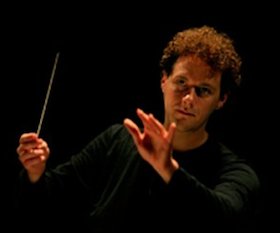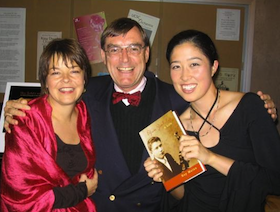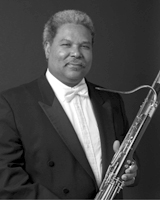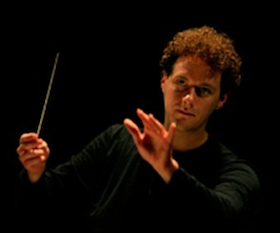
Between Friday evening and Sunday afternoon, the San Francisco Ballet Orchestra and most of the Hamburg Ballet (except for double-cast principal roles) performed John Neumeier's Nijinsky four times. That meant, among other trials and tribulations, performing the entire 67-minute Shostakovich Symphony No. 11 — which serves the ballet's second act — four times in 40 hours.
Not just performing, but doing it brilliantly, under the direction of an excellent young Australian conductor, who is music director of the Hamburg Ballet. Simon Hewett conducted the SFB Orchestra in music by Schumann, Rimsky-Korsakov, and the great "The Year 1905" symphony. Also heard: the Shostakovich Viola Sonata, Op. 147, with SFB Orchestra's Anna Kruger in an extraordinary four-peat of performances.
In the relentless, tragic Shostakovich symphony — performed with ocassionally attenuated outbursts of violence and sorrow within the constraints of the main task of accompanying the dancers — outstanding orchestral soloists were Roy Malan (violin), Kevin Rivard (horn), John Pearson (trumpet), Marilyn Coyne (English horn), Natalie Parker (clarinet), Jim Gott (timpani), and Rufus Olivier (bassoon).

More strings would have served the performance better, but Hewett and the San Francisco musicians certainly made the most of what was available — thus Shostakovich's call for 24 first violins was answered satisfactorily by 12 players, performing twice as hard.
And yet, beyond all that, it was the brilliant Hewett-SFBO sound heard in Rimsky-Korsakov's Sheherazade (not Ravel's Shéhérazade) that defined the event.
For most of those not new to classical music, the bombastic Rimsky work is old hat, in the unexciting category of the 1812 Overture and such. To make those listeners sit up and pay attention to what sounded unexpected and fresh is what the Ballet Orchestra did, more power to them.
On the way to the Saturday matinee of Nijinsky, where I spent the second act watching the orchestra from the first row, I remembered once again with gratitude the tremendous work of Ronn Guidi's Oakland Ballet in reviving/restoring the Ballets Russes — along with the Joffrey, Oakland allowed me to see most of the still-strange and mostly wonderful works from the early 20th century.

In the parade of survivors from the Nijinsky era in Oakland, I even met his daughter, Kyra Nijinsky, a bizarre, borderline unhinged woman. As most people, I was not aware of the fact that she later lived in San Francisco and died in Marin.
Lady Menuhin, Kyra's schoolmate, wrote of the courtship by the young composer Igor Markevitch: "Kyra was impulsive, jolly and straightforward, Igor sly and waspish and as conceited as might be a young man who as a boy prodigy had been commissioned by Diaghilev to write a ballet for his company."
Igor Markevitch had been Diaghilev's last lover. He and Kyra married in Budapest's Coronation Church in 1936, and Tamara Karsavina, once Nijinsky's famous stage partner, was Kyra's witness. They had a son, Vaslav Nijinsky-Markevitch, but the marriage did not last. In the early 1950s, divorced, Kyra Nijinsky was living in Rome and earning a living as a saleslady on the Via Condotti. Toward the end of her life, already settled in San Francisco, she returned to public view in an eccentric film, She Dances Alone, shown on British television, in which she played herself.

